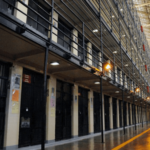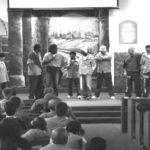California’s prisons have long been integrated. Women’s housing, dining rooms, camps, classrooms, programs, work assignments, yards, visiting and … [Read more...]
Archives for June 2008
Shared Experience
It has been said on many occasions, “If these walls could talk, what stories would flow from them.” Well, San Quentin now finds itself in a unique … [Read more...]
A Surviving Soul
They say when death nears, your priorities change; so with my experience with that, I have a question: What is your hope in the face of death? I see a … [Read more...]
San Quentin Giants “Winning” Season
The San Quentin Giants have managed to win more than they’ve lost, so far. This past Saturday (May 31, 2008) there was a sense of “wow” that … [Read more...]
Overall Health And Wellness
“If you have come to help me you’r are wasting your time…but if you have come because you liberation is bound up with mine, then let us work … [Read more...]
“Like Me”
Listen Lil’ Homie… i’d rather have you like me, than to be like me, See, cause if you were like me, peace would be unlikely, See, i live in a … [Read more...]
Shakespeare's Best Performance
Wow! We made front page news in the Marin Independent Journal (March 04, 2008, Tuesday), for performing Shakespeare’s “Much to do About Nothing.” Who … [Read more...]
Communities Unite – Promote Health Care
In an environment created of iron, stainless steel, cinder blocks and concrete, are an accumulation of men who have committed a mixture of … [Read more...]
We Don’t Scare Straight… We Communicate!
Imagine, if you will, being a prisoner in one of San Quentin State Prison’s most secured and notorious housing units. This is the housing unit where … [Read more...]
California Reentry Program
Resources for a successful parole are available through the “California Reentry Program.” This program is brought to SQ by a group of volunteers. … [Read more...]

